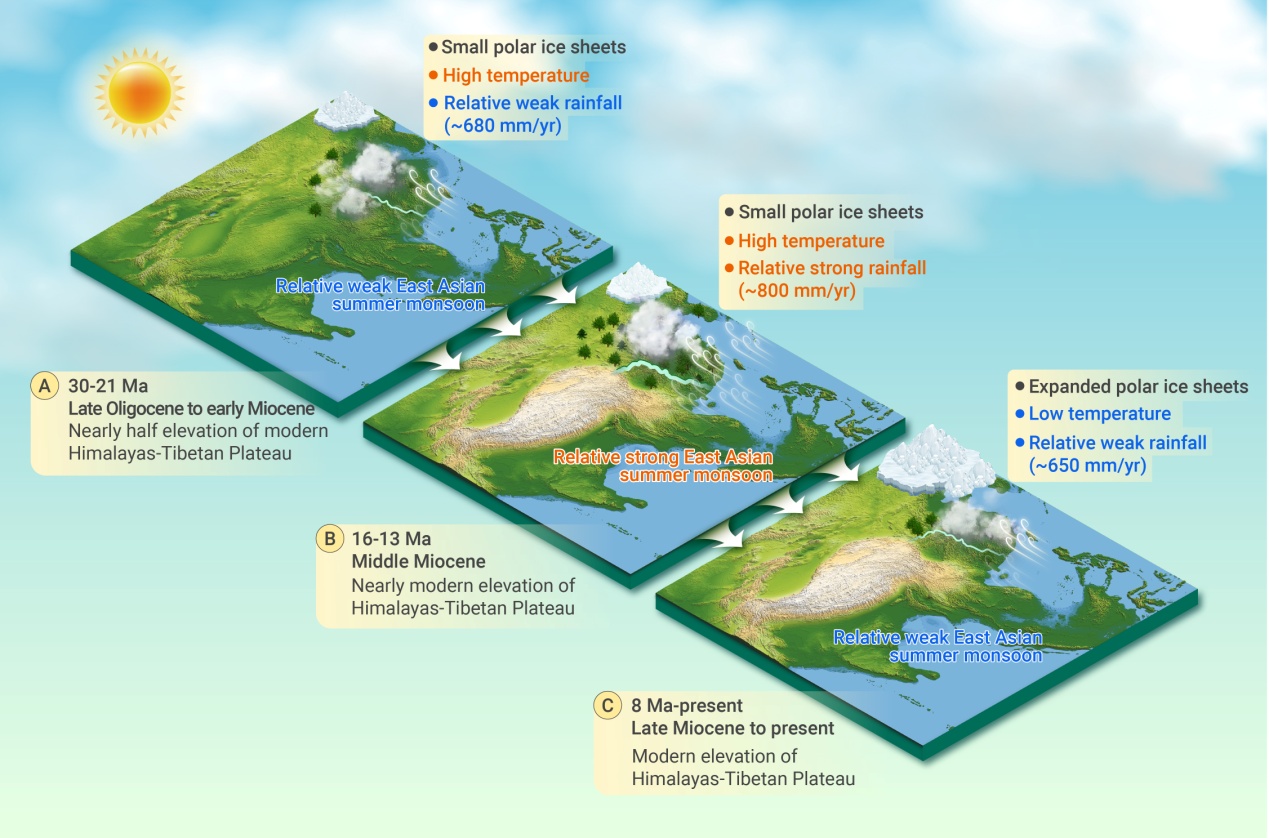
The East Asian summer monsoon (EASM) plays a crucial role in shaping the regional climate and ecosystem. It is a key driver of seasonal precipitation patterns that sustain agricultural productivity and water resources in East Asia. Additionally, the EASM facilitates heat and moisture transport, modulating the regional energy balance and influencing large-scale atmospheric circulation.
However, understanding the evolution of the Cenozoic EASM has been complicated by the lack of extensive, continuous, and high-resolution monsoon records.
To address this challenge, a research team led by Prof. WAN Shiming from the Institute of Oceanology at the Chinese Academy of Sciences (IOCAS), along with collaborators, quantitatively reconstructed the history of EASM precipitation over the past 30 million years. This was achieved using sediment samples from IODP Site U1501 in the northern South China Sea. Their findings were published in The Innovation Geoscience.
The researchers developed a quantitative model based on the behavior of silicate minerals during the weathering process. They examined the relationship between intensified (or weakened) chemical weathering, driven by stronger (or weaker) warm and humid monsoons, and the sedimentary clay minerals. This relationship indicates that higher (or lower) proportions of kaolinite correlate with intensified (or weakened) weathering, while illite exhibits the opposite trend. Using linear regression methods, the team correlated modern East Asian riverine clay mineral assemblages with precipitation and temperature.
This model was then applied to sedimentary cores from the northern South China Sea, allowing the researchers to isolate the temperature effects from weathering indices and quantitatively reconstruct the evolution of EASM precipitation over the past 30 million years.
"We found that global temperature fluctuations and the uplift of the Qinghai-Tibet Plateau served as 'dual engines,' with temperature changes shaping the long-term trends in monsoon rainfall," said Associate Prof. ZHAO Debo, the study's corresponding author.
The uplift of the plateau acted as a giant "air conditioner," reshaping atmospheric circulation and disrupting the original water-heat cycle more than ten million years ago, which allowed East Asia to remain relatively humid during subsequent global cooling periods.
The study also found a relationship between EASM precipitation and temperature changes regulated by atmospheric CO2 levels. In light of current global warming caused by increased CO2 concentrations from human activities, EASM precipitation may significantly rise.
However, for paleoclimate research, the practice of using present conditions to interpret the past must be approached with caution due to the possibility that tectonic movements could disrupt the rhythmic evolution of climate between now and the past. "Future research needs to carefully consider the complex interactions between geological processes and climate change," emphasized Prof. WAN.

Response of EASM precipitation to topography and global climate change in different periods. (Image by IOCAS)

86-10-68597521 (day)
86-10-68597289 (night)

52 Sanlihe Rd., Xicheng District,
Beijing, China (100864)

